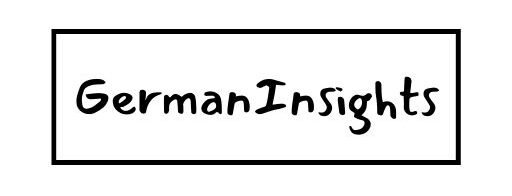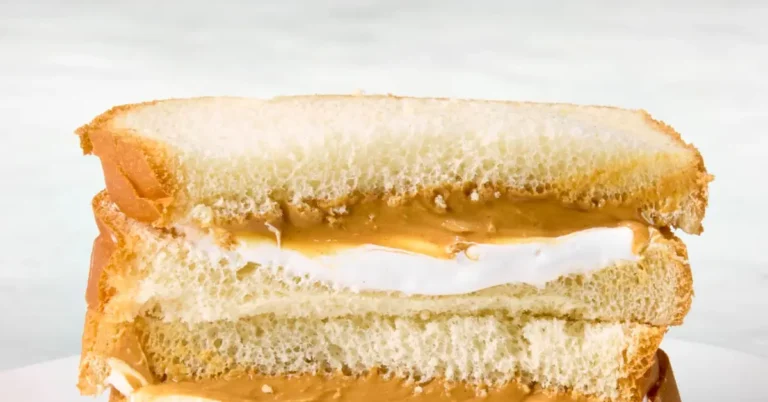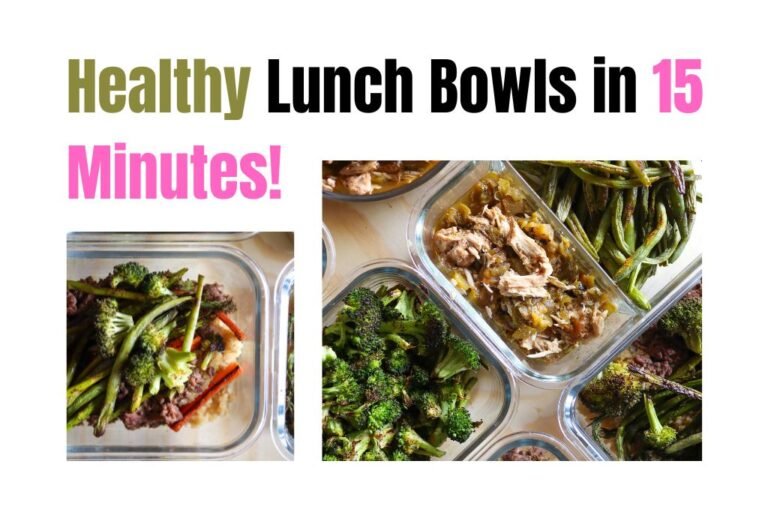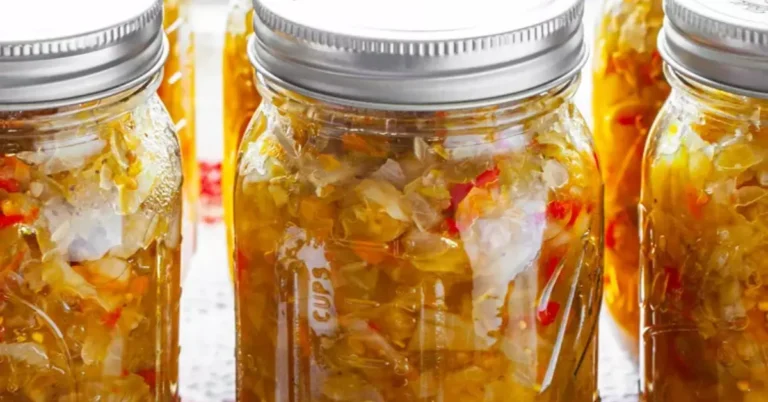Peanut Butter and Jelly Chia Pudding
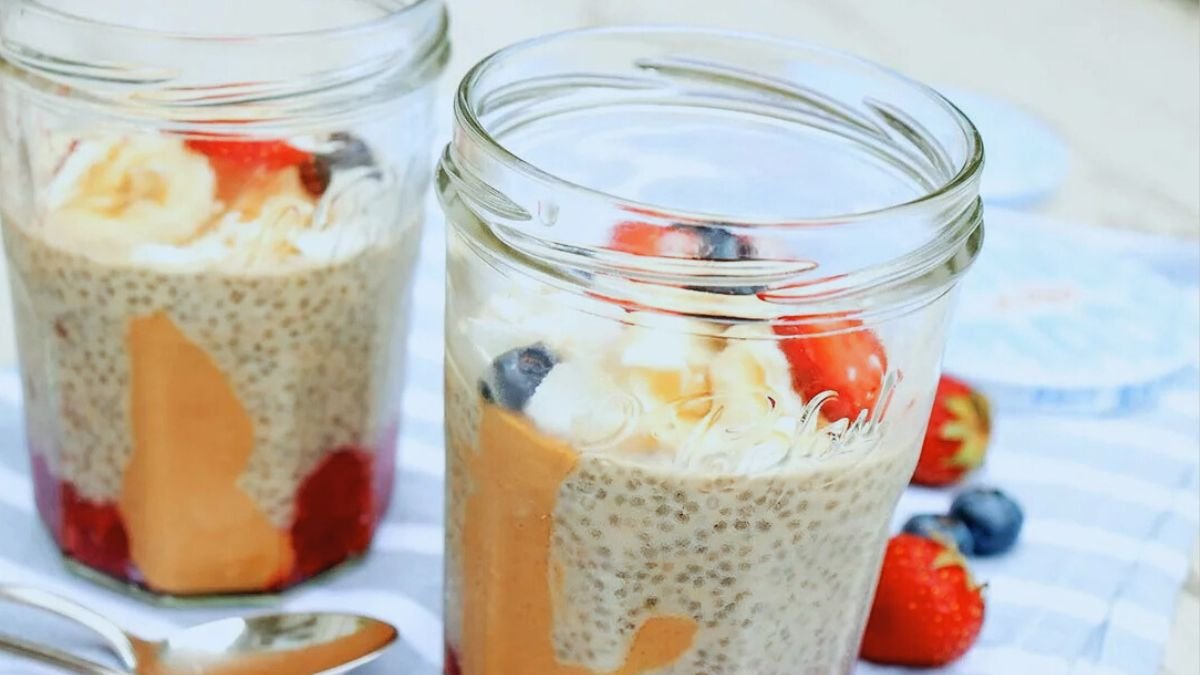
This peanut butter and jelly chia pudding recipe is simple and nutritious make-ahead breakfast or snack. It creates a creamy chia pudding with layers of peanut butter and jam that can be customized to your taste.
Ingredients
For the chia pudding
- 1/4 cup chia seeds
- 1 cup milk of your choice (dairy, coconut, cashew, or almond milk all work well)
- 1 tablespoon maple syrup or other sweetener, optional
- 1/2 teaspoon vanilla extract, optional
- Pinch of salt, optional
For the Peanut Butter and Jelly layers
- 2–3 tablespoons peanut butter, plus extra for drizzling
- 2–3 tablespoons jam or jelly of your choice (strawberry and raspberry are popular options)
Optional toppings
- Fresh berries
- Granola
- Chopped nuts
- Sliced bananas
Instructions
- Mix the chia pudding base: In a jar or bowl, whisk or shake the chia seeds, milk, maple syrup, vanilla extract, and salt until well combined.
- Allow it to set: Refrigerate the mixture for at least 2 hours, or ideally overnight, for the best pudding-like texture. To prevent clumping, stir the mixture again after about 20–30 minutes.
- Create the layers: Once the pudding has thickened, spoon a layer of your favorite jam into the bottom of a serving jar or glass.
- Add peanut butter and pudding: Add a layer of peanut butter over the jam, followed by the chia pudding mixture.
- Assemble and serve: Top the pudding with more jam, a drizzle of peanut butter, and any other desired toppings. You can mix the layers together before eating or enjoy them separately.
Tips and variations
- Prevent clumping: Stirring the chia seed mixture 5–10 minutes after initially mixing will help distribute the seeds evenly and prevent clumps from forming.
- Adjust consistency: If your pudding is too thick, simply stir in a splash of milk until you reach your desired consistency.
- High-protein version: For an extra protein boost, substitute half of the milk with Greek yogurt in the chia pudding mixture.
- Allergy-friendly: Use a sunflower seed butter or almond butter instead of peanut butter, and be sure to use a plant-based milk for a vegan or dairy-free option.
- Make your own jam: Mash fresh berries (like blackberries or blueberries) and simmer them with a little maple syrup to create a quick and fresh “jam” layer.
How long can Peanut Butter and Jelly be stored in fridge?
In an airtight container, peanut butter and jelly chia pudding can be safely stored in the refrigerator for
4 to 5 days. For best results, it is recommended to eat it within the first three days, as the texture and freshness are optimal during this time.
Best practices for storing PB&J chia pudding
- Use an airtight container. To maintain freshness and prevent the pudding from absorbing other food smells, store it in a container with a tight-fitting lid, such as a mason jar.
- Avoid pre-mixing fresh toppings. While the main pudding can be made ahead, it is best to add fresh fruits like berries or bananas just before serving. This keeps them from getting soggy.
- Stir before serving. The pudding may thicken over time. If it seems too thick, just add a splash of milk and stir it thoroughly to achieve your desired consistency.
- Add layers closer to serving. If you are sensitive to textures, layer the pudding right before you plan to eat it. This prevents the jelly from making the pudding watery and keeps the peanut butter from hardening too much.
How to tell if your chia pudding is bad
Use your senses to determine if the pudding is no longer good to eat:
- Smell: If the pudding has a rancid, sour, or otherwise unpleasant odor, discard it.
- Texture: If it becomes overly watery or develops a slimy feel, it’s a sign of spoilage.
- Appearance: Visible mold or significant discoloration means it is time to throw it out.
What are the nutritional benefits of eating Peanut Butter and Jelly chia pudding?
Peanut Butter and Jelly chia pudding is a nutrient-dense meal that provides a combination of protein, fiber, and healthy fats, primarily from the chia seeds and peanut butter. Compared to a traditional PB&J sandwich made with refined white bread and sugary jam, this pudding offers more balanced and sustained energy.
Key nutritional benefits
High in fiber
The chia seeds in the pudding are an excellent source of dietary fiber, with just one ounce (about 2.5 tablespoons) providing nearly 10 grams. Fiber is crucial for digestive health, and a diet rich in it can also help:
- Promote feelings of fullness, which can help with weight management.
- Maintain stable blood sugar levels by slowing the absorption of glucose.
- Lower cholesterol.
Rich in healthy fats
The omega-3 fatty acids in chia seeds and the monounsaturated fats in peanut butter are considered healthy fats.
- Heart health: Research suggests that diets that include healthy fats can lower the risk of heart disease.
- Reduced inflammation: Both omega-3s and other healthy fats are known to have anti-inflammatory effects.
- Brain function: Omega-3 fatty acids are important for cognitive health and brain function.
Good source of protein
The pudding provides a significant amount of plant-based protein from both the chia seeds and peanut butter.
- Satiety: Protein, along with fiber and fat, helps you feel full and satisfied for a longer period of time, reducing cravings.
- Muscle health: Protein is essential for building and repairing muscle tissue.
Packed with vitamins and minerals
PB&J chia pudding offers a variety of micronutrients, including:
- Magnesium: Important for muscle and nerve function.
- Calcium: Crucial for bone health.
- Antioxidants: Help protect the body’s cells from damage caused by free radicals.
- B vitamins: Support overall energy and metabolic processes.
Factors to consider
While peanut butter and jelly chia pudding is generally a healthier option than a traditional sandwich, its nutritional benefits can be influenced by the ingredients you choose.
- Choose natural peanut butter: Opt for a brand with minimal ingredients—ideally just peanuts and salt—to avoid unnecessary added sugars and oils.
- Look for low-sugar jam: Many commercial jams are high in added sugar, which can counteract the health benefits. You can also make a simple homemade fruit compote by simmering fresh or frozen berries with a little maple syrup.
- Add nutrient-dense toppings: Boost the nutritional profile further by adding fresh fruit, nuts, or seeds to your pudding.
If you’re looking for more breakfast recipes like Overnight Breakfast Porridge and Sweet Potato and Black Bean Breakfast Burritos subscribe to join us.
